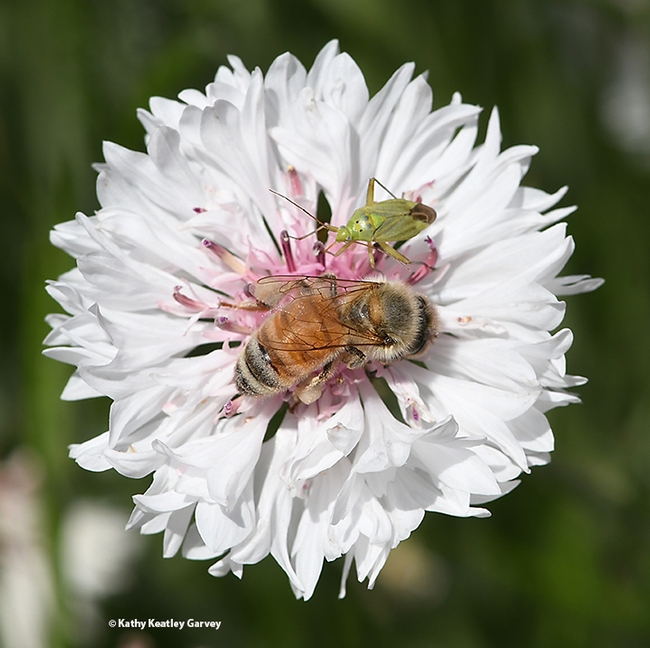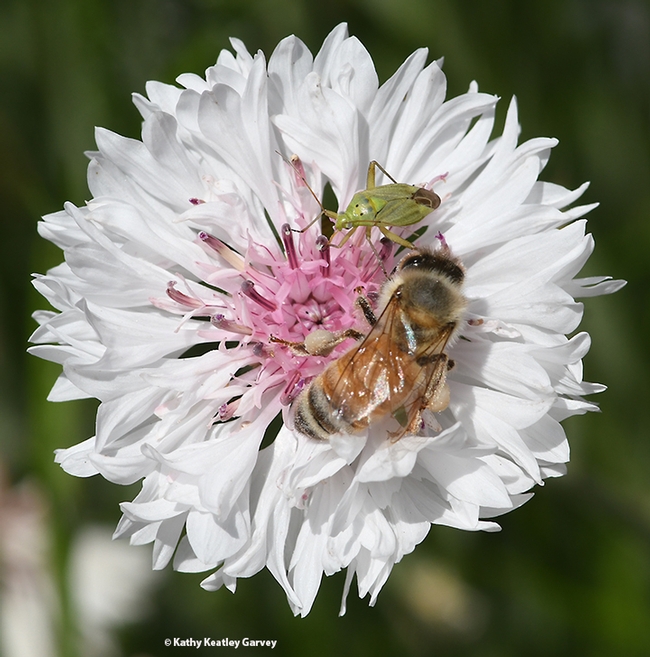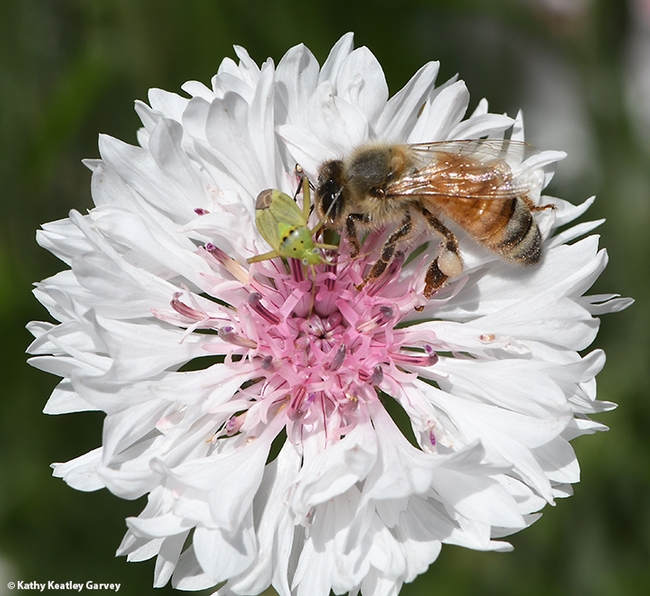
At a recent visit to the UC Davis Ecological Garden at the Student Farm, we watched a honey bee, Apis mellifera, and a lygus bug nymph, Lygus hesperus, foraging on a batchelor button, Centaurea cyanus.
The bee: the beneficial insect.
The lygus bug or Western tarnished plant bug: a pest.
The lygus bug, which punctures plant tissues with its piercing mouthparts, was there first, but no matter. The bee joined in, edging closer and closer until they touched.
In photography insect circles, that's a "two-for"--two insects in one image.
The bee finally buzzed off, leaving the lygus bug to "dine" alone.
The lygus bug, distinguished by a conspicuous triangle on its back, is a very serious pest of cotton, strawberries and seed crops, including alfalfa. Scientists estimate that in California alone, the pest causes $30 million in damage to cotton plants each year, and at least $40 million in losses to the state's strawberry industry. The insect is also a pest of numerous fruits and vegetables, including apples, pears, peaches, eggplant, tomato, potato, artichoke, lettuce, sugarbeet, and beans. See what the UC Statewide Integrated Pest Management Program (UC IPM), says about the pest.
What do they look like? "Adult lygus bugs are green, straw yellow, or brown with a conspicuous yellow or pale green triangle on their backs," UC IPM says. "Nymphs are light green...Lygus can move into gardens or orchards from weeds, especially when they dry up. They are a particular problem in beans, strawberries, and orchard crops, feeding on developing flower buds and fruit. Fruit may become blemished and discolored, deformed, or twisted and may develop depressions or pustules."
Cotton? "Lygus bugs," says UC IPM, "migrate to cotton from other hosts, so management of this pest begins with assessing its populations outside the field. Check for them on weeds, in nearby alfalfa, and in other crops, and keep in touch with your pest control adviser, Extension agent or Farm Advisor for area-wide information on lygus bug populations. Proper management of alfalfa harvest can reduce damaging migrations to cotton."
Cooperative Extension specialist Ian Grettenberger, UC Davis Department of Entomology and Nematology, works closely with farmers in their lygus bug battles.
Attached Images:

A honey bee and a lygus bug sharing a batchelor button in the UC Davis Ecological Garden. (Photo by Kathy Keatley Garvey)

The honey bee edges closer to the lygus bug. (Photo by Kathy Keatley Garvey)

The insects meet, the honey bee, the beneficial insect, and the lygus bug, the pest. (Photo by Kathy Keatley Garvey)